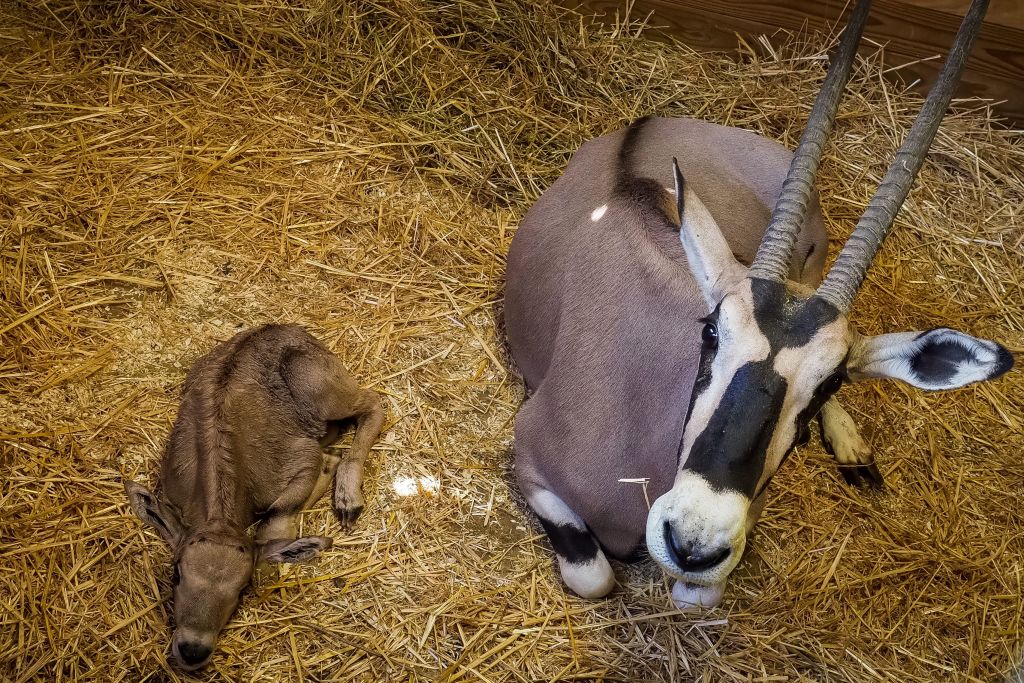Oregon Zoo has welcomed a new bontebok antelope, an endangered species with only 2,500 individuals surviving worldwide. Driven close to extinction through hunting in the 19th and early 20th centuries, the antelope cannot jump, making them easy to contain, and a group of farmers safely held the last 17 remaining bonteboks until the creation of South Africa’s Bontebok National Park, which has overseen a very successful recovery of the species. The calf, born on April 1 to mother Winter, required a plasma transfusion and additional feeding to recover but is now doing well.
A rare antelope species, Bontebok, has welcomed a new member at the Oregon Zoo. The birth of a Bontebok calf has increased the population of this endangered species to 2,500. With years of conservation efforts, it’s a proud moment for the zookeepers to witness the birth of a healthy calf.
Bontebok: A critically endangered species
Before we delve into the details of the calf’s birth, let’s talk about the species itself. Bontebok is a medium-sized antelope species that primarily resides in South Africa. Unfortunately, hunting and habitat loss have drastically decreased the Bontebok population. In the early 1800s, the animal was on the brink of extinction, with only 22 individuals surviving in the wild.
Oregon Zoo’s conservation efforts
The Oregon Zoo played a significant role in conserving the Bontebok species. The zoo started a breeding program in the 1960s, and since then, they have successfully bred over 220 Bonteboks. The zookeepers have worked tirelessly to increase the population and contribute to the species’ survival.
A new member joins the family.
On June 7, 2021, the Oregon Zoo welcomed a healthy Bontebok calf. The calf’s mother, Swala, was a first-time mom, and the staff was thrilled with the successful birth. The calf weighed around 20 pounds at birth and had been feeding and bonding with its mother. The calf is expected to grow to weigh about 100-150 pounds in adulthood.
The significance of the calf’s birth
The birth of the Bontebok calf is significant for many reasons. Firstly, it’s a testament to the Oregon Zoo’s conservation efforts and the success of its breeding program. It’s also a vital addition to the Bontebok population, critical for survival.
The Bontebok population in the wild is still vulnerable, and captive breeding programs play a crucial role in the conservation of the species. The Oregon Zoo’s efforts to breed and release Bonteboks into the wild have proven successful. The Bonteboks released into the wild have thrived and contributed to the species’ population growth.
Zoo visitors are excited about the birth.
Visitors of the Oregon Zoo are excited to see the new Bontebok calf, and zoo staff encourages visitors to come and see the calf. Though the calf is still too young to be on display, visitors can see it and its mother from a distance.
In conclusion, the birth of the Bontebok calf is a proud moment for the Oregon Zoo and a significant milestone for the Bontebok species’ survival. The zoo’s conservation and breeding program has allowed the species’ population to grow and prosper. It reminds us of the importance of conservation efforts and our role in protecting endangered species. As visitors, we can support zoos and their conservation efforts by learning about endangered species and spreading awareness. Together, we can ensure a future for our planet’s wildlife.


